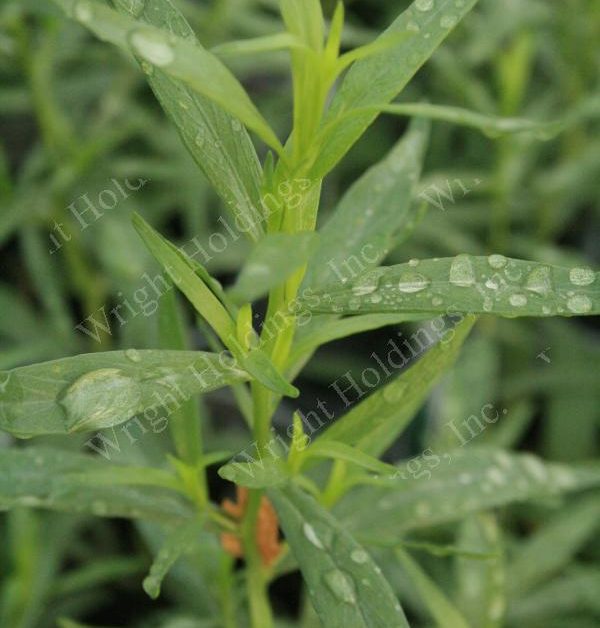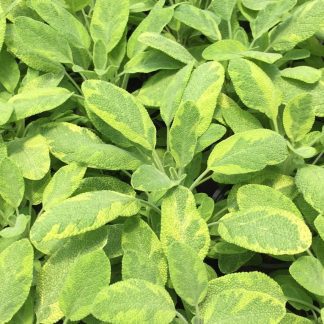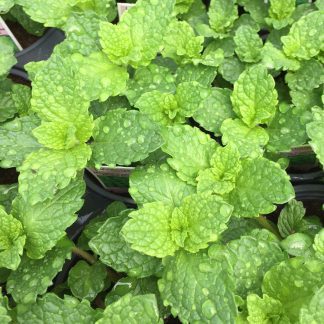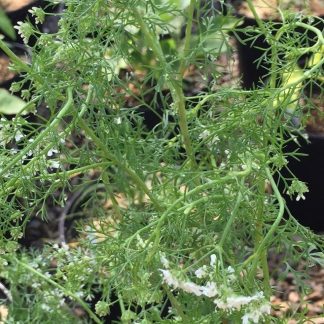Description
French Tarragon (Artemisia dracunculus var. sativa): A Culinary Treasure for Home Gardens
French Tarragon (Artemisia dracunculus var. sativa) is one of the most refined herbs you can add to your garden or kitchen. Known for its delicate anise-like flavor and fragrance, this perennial herb elevates both everyday meals and gourmet dishes. For centuries, French chefs have prized it as a cornerstone of classic sauces, vinaigrettes, and roasted dishes. In a home garden, it offers beauty, fragrance, and flavor in equal measure.
What Makes French Tarragon Special?
French Tarragon is a member of the daisy family (Asteraceae) and stands apart from other tarragon types. Its flavor is sweeter, softer, and far more nuanced than Russian or Mexican tarragon. The leaves carry subtle hints of licorice and fennel, which blend beautifully with vinegar, butter, or fresh greens. This complexity explains why it is essential in French cuisine, particularly in dishes like béarnaise sauce and fine herb blends.
Beyond the kitchen, French Tarragon is also ornamental. Its slender, lance-shaped leaves and graceful growth habit bring texture and movement to herb beds, borders, and container gardens. In late summer, small pale green flowers may appear, but the foliage remains the star attraction.
Growing French Tarragon
Unlike many herbs, French Tarragon does not grow well from seed. True French Tarragon is sterile and is propagated by cuttings or root divisions. This ensures you get the proper flavor and aroma rather than the harsh, bitter taste of Russian tarragon.
Planting Location
- Sunlight: Full sun is best, though it tolerates partial shade in hotter regions.
- Soil: Well-drained, sandy or loamy soil with moderate fertility. It dislikes heavy, wet soil.
- pH Range: Slightly alkaline to neutral (6.5 to 7.5).
Spacing and Growth Habit
French Tarragon grows 18 to 36 inches tall and about 12 inches wide. Give plants room to spread without crowding. Air circulation reduces the chance of fungal diseases.
Care and Maintenance
French Tarragon is a low-maintenance herb but thrives with a few key practices:
- Watering: Keep soil lightly moist during establishment. Once mature, water sparingly—overwatering can cause root rot.
- Pruning: Regularly pinch back tips to encourage bushy growth. Harvest leaves frequently to maintain fresh foliage.
- Winter Care: In colder climates (Zones 4–5), mulch heavily after frost to protect roots. In warmer zones, it remains semi-evergreen.
- Division: Every 2–3 years, divide the plant in spring to rejuvenate growth and prevent woody stems.
Harvesting French Tarragon
Harvest leaves throughout the growing season. The flavor is strongest just before flowering in summer. Use scissors or pinch stems close to the base. Fresh leaves are best, but they can also be dried or frozen. To dry, spread sprigs in a warm, well-ventilated space. Frozen leaves retain more flavor—simply chop and freeze in ice cube trays with water or olive oil.
Culinary Uses
French Tarragon’s magic lies in its ability to transform simple dishes:
- Herb Butters: Blend chopped leaves into butter for steaks, fish, or bread.
- Vinaigrettes and Dressings: Infuse vinegar or oil for salads and marinades.
- Classic Sauces: Essential in béarnaise, hollandaise, and fines herbes blends.
- Egg Dishes: Add to scrambled eggs, omelets, or quiches for a fresh twist.
- Poultry and Fish: Pairs beautifully with roasted chicken or delicate white fish.
Pro tip: Use French Tarragon sparingly. Its flavor intensifies with heat and can easily overpower a dish.
Benefits Beyond the Kitchen
French Tarragon isn’t just about flavor. It has mild digestive benefits and may stimulate appetite. Historically, it was used as a breath freshener and mild sedative. The plant also attracts beneficial insects, adding value to pollinator-friendly gardens.
Companion Planting
French Tarragon makes an excellent companion for vegetables and other herbs. It deters pests like aphids and can be planted near tomatoes, eggplants, and peppers for mutual benefit. Its fine foliage also complements coarser plants like basil or parsley in mixed herb gardens.
Why Choose French Tarragon Over Other Varieties?
There are three main tarragon types—French, Russian, and Mexican. French Tarragon reigns supreme for culinary use. Russian tarragon is hardier but lacks flavor, and Mexican tarragon (Tagetes lucida) tastes more like sweet marigold than true tarragon. If cooking is your goal, French is the gold standard.
Propagation Tips
Since French Tarragon cannot be grown from seed, propagation is by:
- Root Division: In spring or fall, dig up the root mass, divide sections with 3–4 shoots, and replant.
- Stem Cuttings: Take softwood cuttings in late spring and root them in moist potting mix or water until new roots appear.
Common Challenges
- Root Rot: Avoid waterlogged soil. Plant in raised beds or containers if drainage is poor.
- Woody Growth: Divide or prune plants every few years to maintain tenderness.
- Loss of Flavor: Replace plants every 3–4 years for peak flavor, as older plants lose potency.
Container Growing
French Tarragon adapts beautifully to pots, especially for small spaces or patios. Choose a container at least 12 inches wide with drainage holes. Use a light potting mix, and place it in full sun. Water sparingly, and bring indoors before frost if needed.
Preserving Tarragon Flavor
Fresh tarragon is unmatched, but preserving extends its use:
- Freezing: Chop and freeze in airtight bags or ice cube trays.
- Vinegar Infusion: Steep sprigs in white wine vinegar for a tangy herb vinegar.
- Drying: Hang upside down in a dark, ventilated room, though some flavor will be lost.
A Touch of French Elegance for Every Garden
French Tarragon is more than an herb—it’s an experience. Its subtle licorice notes elevate the simplest meals and bring a touch of European sophistication to any kitchen. Whether tucked into a container on a sunny balcony or nestled among other herbs in a garden bed, it rewards with fragrance, flavor, and effortless charm.
Welcoming This Delicate Herb Into Your Space
Growing French Tarragon invites both beauty and flavor into your everyday life. It thrives with minimal care, adds character to the garden, and transforms your cooking with its refined taste. By giving it a sunny spot and a little attention, you create a steady supply of one of the world’s most celebrated culinary herbs. And every time you snip a few leaves, you’ll taste why generations of gardeners and cooks have cherished this plant.




